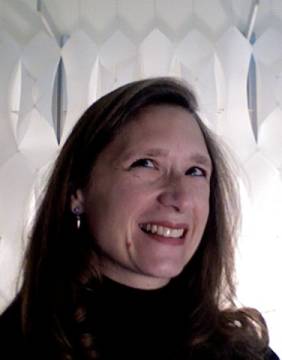Tremendous.
Blog Post
How the 2008 AIA/COTE Top Ten Green Projects were chosen

In the middle of dinner conversation about mosque design, car racing, and sole proprietorship, I realized that I was surrounded by architecture's luminaries... one Pritzker Prize winner and a handful of AIA Fellows. I could have spent the rest of the weekend nervous and self-conscious, but as the "student" member of the 2008 AIA COTE Top Ten Awards jury, I realized that expectations for my participation were probably pretty low, so I just went with the flow and drank in the experience.
Our jury of six knew ahead of time that we had to pick ten of the 77 entries. (At different points we discussed selecting three or eleven or eight, but I was pretty firm about one thing--we were going to have ten winners for the Top Ten awards.) Sunday morning, our collaborative process started with aesthetics, as we could not--and determined we would not--give an AIA Award to an aesthetic mess of a building. And on that criteria, we had a surprising amount of aesthetic consensus, considering the diversity in the room.
Once you see the official published jury comments, you'll hear a note of disappointment. One of the conclusions we came to, mirrored in the Cranbrook 2007 "Integrated Practice and the Twenty-first Century Curriculum" conference comments, was that higher sustainable performance should now be a minimum bar for all design awards, not just the AIA COTE Top Ten.
I may be an academic playing with words here (i.e. how does higher performance set a minimum bar?), but as LEED was set up to capture the best performing 25% of its "market," our goal for all AIA awards should include excellence in all areas of our professional responsibility--Vitruvius certainly didn't limit his advice to "delight" alone. So we found entrants that were high "performers" but not very... um.... exceptional, shall we say... in design. Or the inverse happened, with attendant spirited discussions. Surprisingly, we all knew of stellar projects that our colleagues did not enter into the competition, and so concluded that the niche of COTE should expand into the national design awards. Lucky for us, the ear of next year's AIA president was at the table.
With those caveats, I can say that there were some truly inspiring projects. Jury comments about the winners will be published, so I'm not going to repeat them here. And since this is a blog, I'm going to take the liberties granted me and switch gears to my critical observations, not just a recap of a jury process.
My interests lie in the social barriers to sustainable/environmental/green construction/design/building (circle your favorite combination). As we looked at the projects, we all had an unease with projects that did not meet the maximum performance known to green building. But that's when we started to look at context. So a test for readers: Which was a larger accomplishment: a big federal agency who regularly produces dim bland boxes now getting a more sustainable and beautiful building, or yet another LEED Platinum-rated environmental center (yawn...)?
SUPPORT INDEPENDENT SUSTAINABILITY REPORTING
BuildingGreen relies on our premium members, not on advertisers. Help make our work possible.
See membership options »What about the inspirational design done for a project that faced budget cuts (twice) and a hurricane, but still stuck to its sustainable goals? The house we wanted oh-so-badly to give an award to had 4,000 square feet for two people. The big box store that could have been an exemplar of sustainability was, frankly, really ugly. The history of environmental design has enough poor aesthetic examples for people to use in repudiation of environmental goals. We refused to feed that fire.
We (the profession of architecture) must recognize where leadership needs to come from, and also where it flows through. Our decision was not to select the ten "best" buildings. Instead, it was to select the ten best exemplars of sustainable design that currently on-the-boards work will be held to. A speculative condominium that makes both an environmental and design statement should inspire other developers to step closer to this edge of respect and responsibility to future residents. C'mon in, the water's great!
At the evening panel session with Seattle's local architecture community, I suggested that to meet the goals of sustainability, we need to bring green design into the difficult places--resistant clients, poor clients, prominent clients. Sustainability needs to be seen in our profession less as a technological fix reserved for the spec writers and engineers. Instead, it should be seen as our responsibility to society in exchange for the state-licensed monopoly we enjoy. If we don't hold both beauty and sustainability as equal cultural commitments, then we might as well hand over our licenses and call ourselves aesthetic consultants.
– Rebecca Henn, AIA
Published April 22, 2008 Permalink Citation
(2008, April 22). How the 2008 AIA/COTE Top Ten Green Projects were chosen. Retrieved from https://www.buildinggreen.com/news-article/how-2008-aiacote-top-ten-green-projects-were-chosen
Comments
Reading your commentary on th
Reading your commentary on the Jury process makes us appreciate our award (for the Queens Botanical Garden) even more, and your thoughts will continue to inspire our future work. Thank you for your insight.



Add new comment
To post a comment, you need to register for a BuildingGreen Basic membership (free) or login to your existing profile.